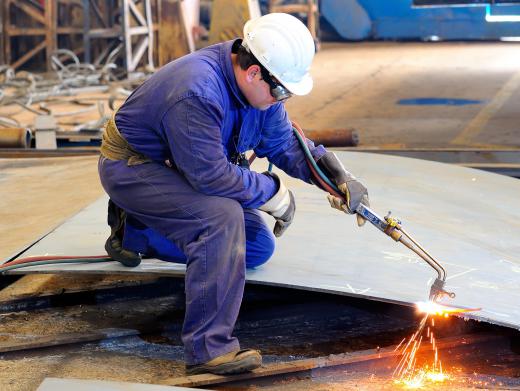A mixing chamber is a small compartment in the feed systems used by gas-fueled welding systems. Its function is to ensure the proper mixing levels of the different gases used in the combustion process required to keep the welding material hot enough to fuse two separate materials together during the welding process. These chambers may be located within the feed system either at the beginning of the feed lines or in the very tip of the device used to deliver the welding material to the materials being welded.
The two most common gases used in the welding process are oxygen and acetylene. In order to produce a consistent pattern in the heating and the fluidity of these welding materials, the measurements of the two gases must remain consistent and the gases must be properly mixed. The mixing chamber is an important section in the gas feeding process, because it’s main function is to maintain continuous flow of the proper mixture amounts of the two gases to ensure proper combustion. If the two gases become too rich or too lean in just one of the components, the torch will not produce the correct amount of heat, leaving the weld of poor quality. The mixing chamber ensures this does not occur.

The mixing chamber located in the tip of the welding torch, where it works by creating turbulence in both gases, ensures the proper mixing of the two. The amount of turbulence that is created is based on the size and shape of the chamber. The chamber itself is larger in size or diameter than the line feeding the gases, as well as larger than the size of the feed line exiting the mixing chamber. A sudden opening in the feed line allows the mixing chamber to create the necessary turbulence in each of the gases, disbursing the gases and ensuring the proper mixture and amounts of each gas being dispensed.
Anyone operating a welding or cutting torch should be thoroughly trained in how to use these components. Pure oxygen is not flammable but it is an accelerator that can make things burn faster and even cause normally inflammable substances to burn. This is why special care must be taken with acetylene and oxygen. It is also imperative that the user of such a welding tool be aware of how to troubleshoot and diagnose any possible problems with one of these machines. If a crack occurs in the mixing chamber, the gases may escape prematurely, which can be extremely dangerous.
